Eiffel tower
Did Eiffel really live in the tower?
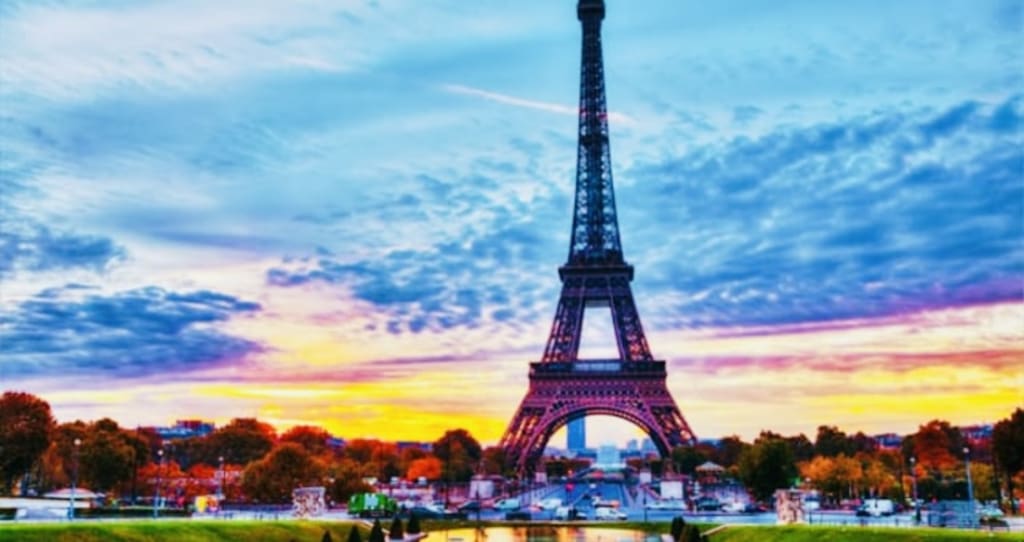
The Eiffel Tower is a wrought-iron lattice tower on the Champ de Mars in Paris, France. It is named after the engineer Gustave Eiffel, whose company designed and built the tower.
I have not yet climbed to the top of the tower, but it is next on my to-do list. For now, I am viewing it through the eyes of those who have been there and are willing to share their various views.
Locally nicknamed "La dame de fer" (French for "Iron Lady"), it was constructed from 1887 to 1889 as the centerpiece of the 1889 World's Fair. Although initially criticized by some of France's leading artists and intellectuals for its design, it has since become a global cultural icon of France and one of the most recognizable structures in the world.
It was designated a historical monument in 1964, and was named part of a UNESCO World Heritage Site ("Paris, Banks of the Seine") in 1991.
Gustave Eiffel designed an apartment located at the top of the Tower. But did he really live in it? It was intended from the very beginning that the last floor of the Eiffel Tower be used to accommodate visitors. However, Gustave Eiffel reserved the platform at the very top of the Tower, located just below its spire.
Eiffel made use of his apartment at the top of the tower to carry out meteorological observations, and also used the tower to perform experiments on the action of air resistance on falling bodies.
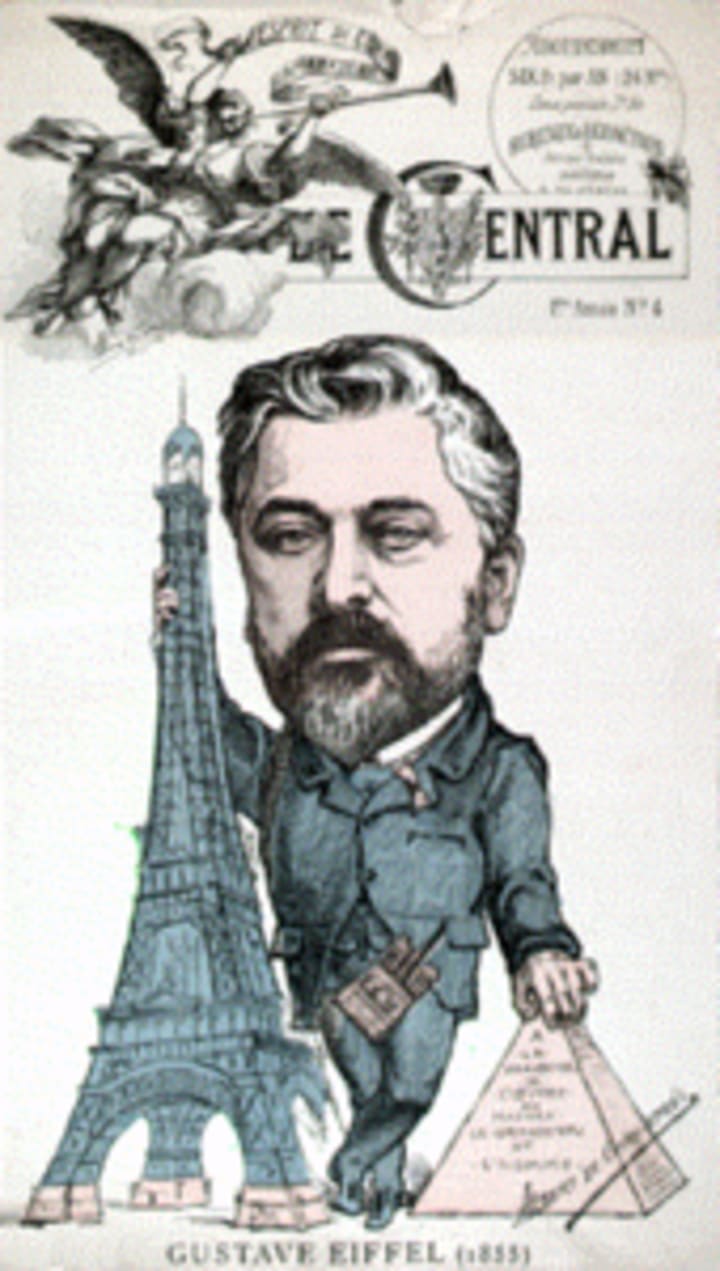
Caricature of Gustave Eiffel comparing the Eiffel tower to the Pyramids, published in Le Temps, February 14, 1887.
When a petition called "Artists against the Eiffel Tower" was sent to the Minister of Works and Commissioner for the Exposition, Adolphe Alphand, and it was published by Le Temps on 14 February 1887.
We, writers, painters, sculptors, architects and passionate devotees of the hitherto untouched beauty of Paris, protest with all our strength, with all our indignation in the name of slighted French taste, against the erection … of this useless and monstrous Eiffel Tower … To bring our arguments home, imagine for a moment a giddy, ridiculous tower dominating Paris like a gigantic black smokestack, crushing under its barbaric bulk Notre Dame, the Tour Saint-Jacques, the Louvre, the Dome of les Invalides, the Arc de Triomphe, all of our humiliated monuments will disappear in this ghastly dream. And for twenty years … we shall see stretching like a blot of ink the hateful shadow of the hateful column of bolted sheet metal.
Gustave Eiffel responded to these criticisms by comparing his tower to the Egyptian pyramids:
"My tower will be the tallest edifice ever erected by man. Will it not also be grandiose in its way? And why would something admirable in Egypt become hideous and ridiculous in Paris"?
These criticisms were also dealt with by Édouard Lockroy in a letter of support written to Alphand, sardonically saying:
"Judging by the stately swell of the rhythms, the beauty of the metaphors, the elegance of its delicate and precise style, one can tell this protest is the result of collaboration of the most famous writers and poets of our time".
He explained that the protest was irrelevant since the project had been decided upon months before, and construction on the tower was already under way.
Today, it is widely considered to be a remarkable piece of structural art, and is often featured in films and literature.
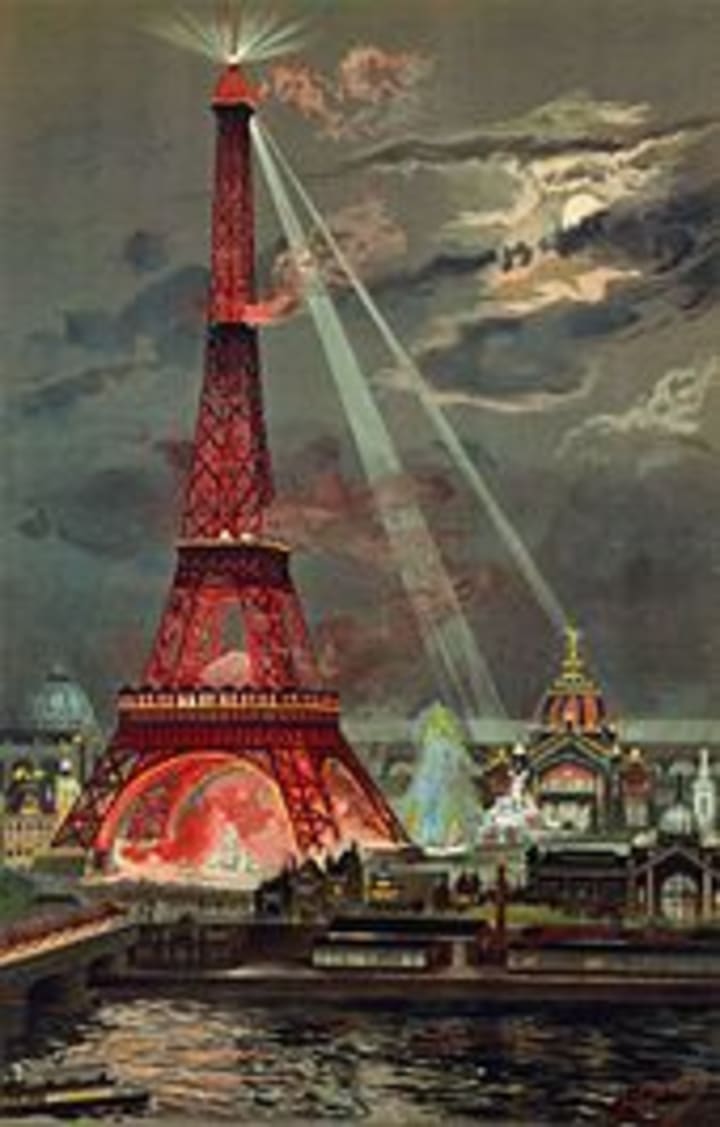
Illumination of the tower at night during the exposition.
Famous visitors to the tower included the Prince of Wales, Sarah Bernhardt, "Buffalo Bill" Cody (his Wild West show was an attraction at the exposition) and Thomas Edison. Eiffel invited Edison to his private apartment at the top of the tower, where Edison presented him with one of his phonographs, a new invention and one of the many highlights of the exposition. Edison signed the guestbook with this message:
To M Eiffel the Engineer the brave builder of so gigantic and original specimen of modern Engineering from one who has the greatest respect and admiration for all Engineers including the Great Engineer the Bon Dieu, Thomas Edison.
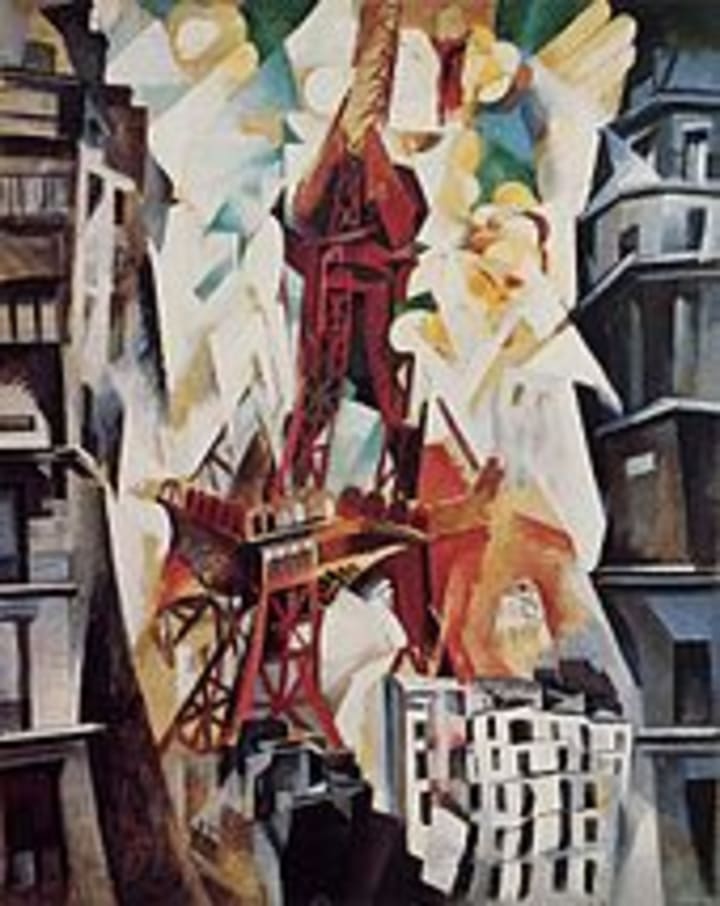
The Eiffel Tower has been a subject of art, as in this cubist painting by Robert Delaunay (1911).
Troubles.
On two separate but related occasions in 1925, the con artist Victor Lustig "sold" the tower for scrap metal. A year later, in February 1926, pilot Leon Collet was killed trying to fly under the tower. His aircraft became entangled in an aerial belonging to a wireless station.
In 1930, the tower lost the title of the world's tallest structure when the Chrysler Building in New York City was completed.
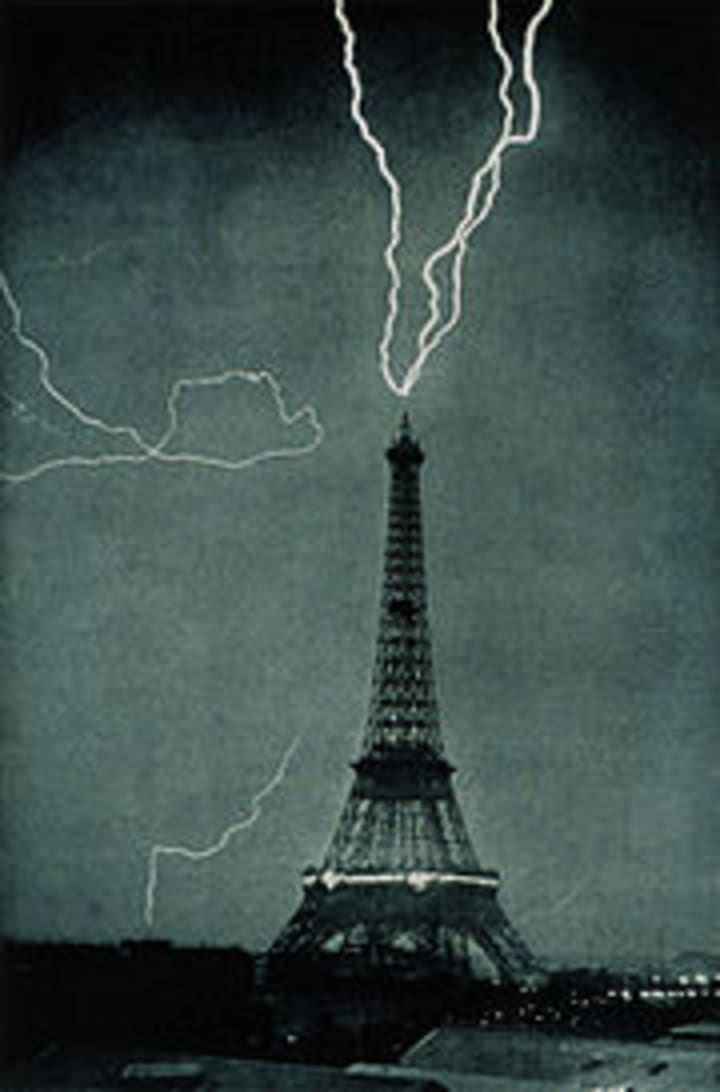
Lightning striking- the tower in 1902.
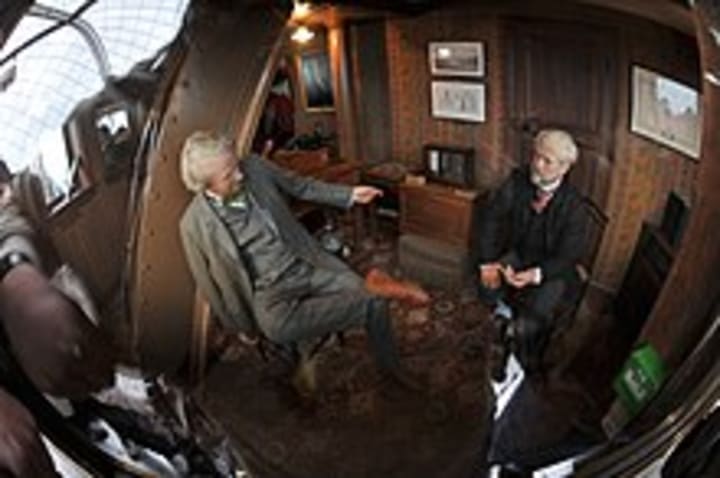
Gustave Eiffel's apartment at the third floor.
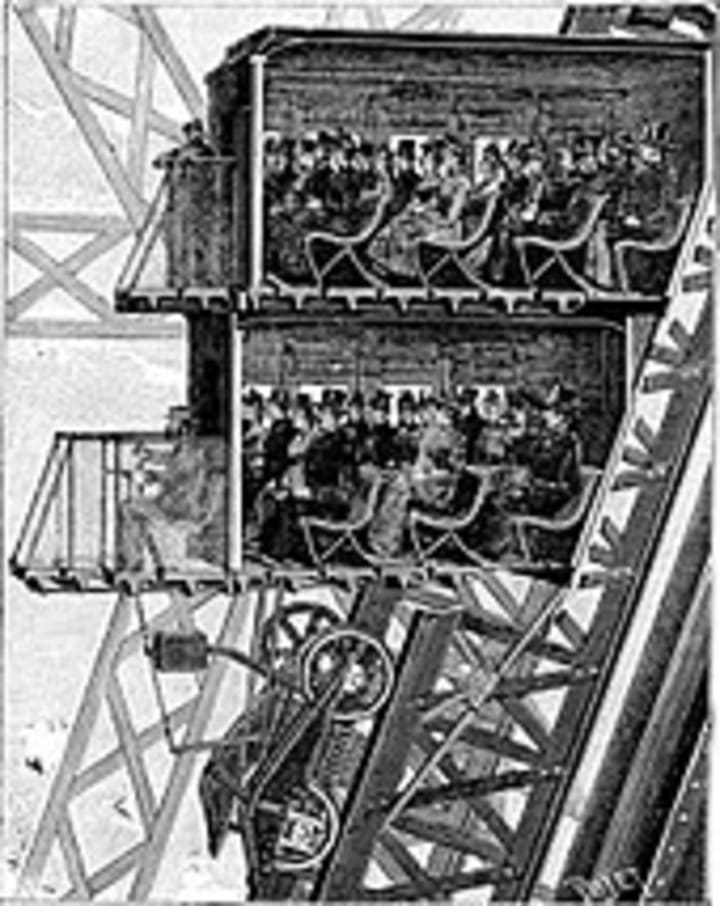
The Otis lifts originally fitted in the north and south legs.
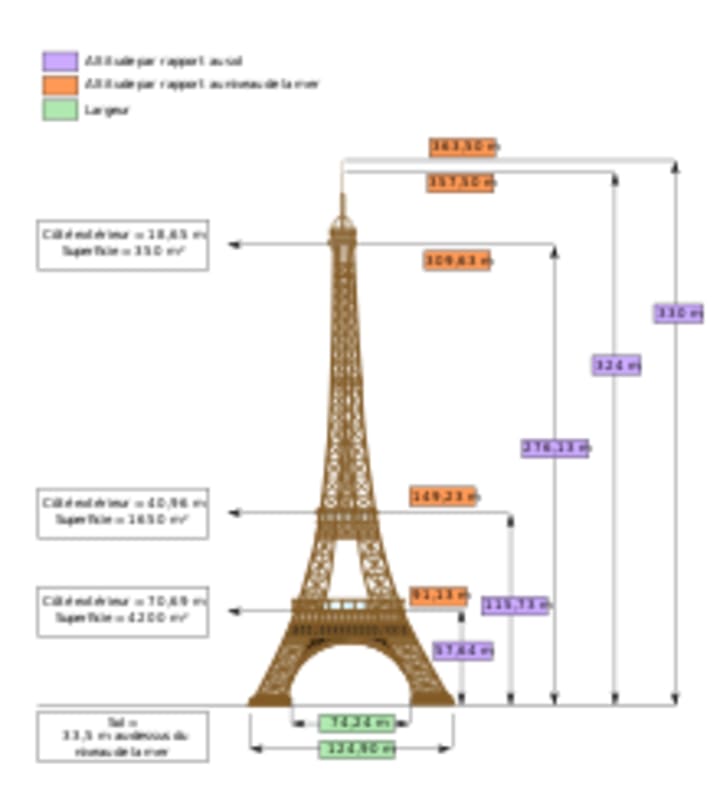
Current dimensions of the tower.
~~~~~~~~
When temperatures rise, the tower increases in size, due to a natural physical phenomenon called 'thermal expansion'. This is the tendency of matter to change its shape, area, volume and density in response to a change in temperature. Heat causes an increase in volume that makes the Eiffel Tower a few centimeters taller. This expansion also causes the tower to tilt slightly away from the sun.
When cold weather arrives, the metal structure contracts, and it can lose a few centimeters as well. The approximate changes in height through the winter through summer seasons of the Tower is 15cm, (5.9 inches).
........................................................................
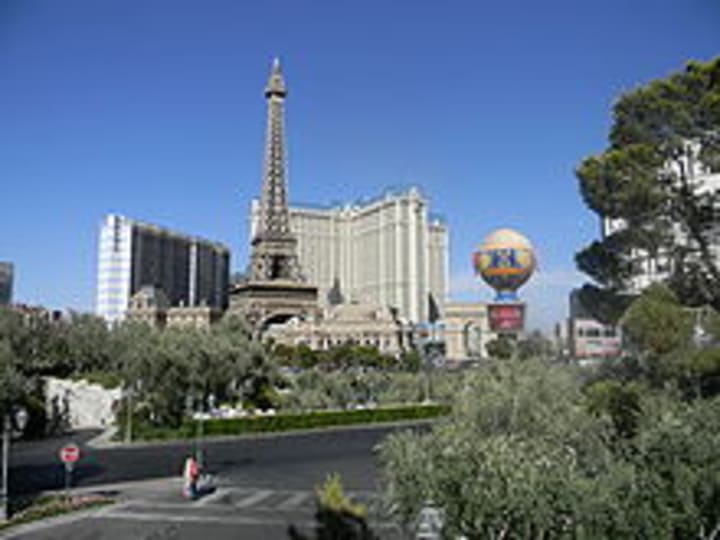
Replica at the Paris Las Vegas Hotel, Nevada, United States.
About the Creator
Novel Allen
Clouds come floating into my life, no longer to carry rain or usher storm, but to add color to my sunset sky. ~~ Rabindranath Tagore~~
Enjoyed the story? Support the Creator.
Subscribe for free to receive all their stories in your feed. You could also pledge your support or give them a one-off tip, letting them know you appreciate their work.
Reader insights
Outstanding
Excellent work. Looking forward to reading more!
Top insights
Compelling and original writing
Creative use of language & vocab
Easy to read and follow
Well-structured & engaging content
Excellent storytelling
Original narrative & well developed characters
Expert insights and opinions
Arguments were carefully researched and presented
Eye opening
Niche topic & fresh perspectives
Heartfelt and relatable
The story invoked strong personal emotions
Masterful proofreading
Zero grammar & spelling mistakes
On-point and relevant
Writing reflected the title & theme






Comments (4)
Nice
Whoaaa, I was so surprised that Gustave Eiffel knew Thomas Edison! Also, I never knew about the apartment. I learnt a lot of new things from this. Thank you so much dear Novlet!
Ah, the Eiffel Tower. It will always be an architectural wonder to me. Your research and writing are impressive. Until later...
I've never seen that photograph of the lightning strike. Your excellent research makes an entertaining and educational article.